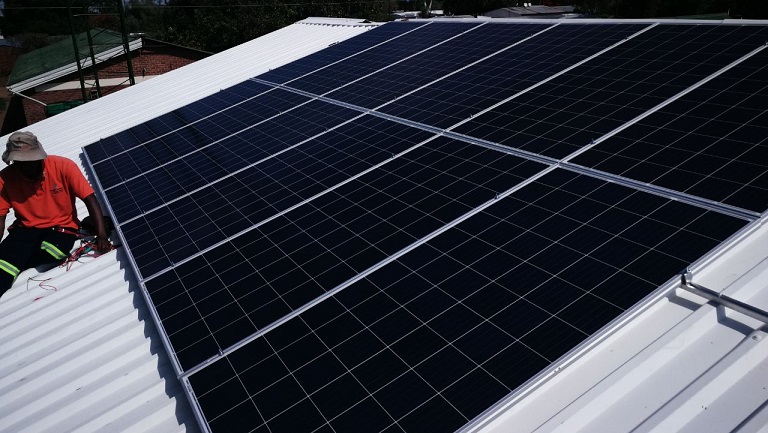The Malawi Ministry of Health (MoH), in cooperation with the Project Implementation Unit of international financing giant The Global Fund to Fight AIDS, Tuberculosis and Malaria, have committed more than $3.5 million to improving the energy infrastructure at 85 health care facilities across Malawi.
The facilities will be equipped with combinations of solar power solutions, which will enable health care providers to better serve the thousands of patients who visit the facilities each year and decrease facilities’ dependency on the unstable national power network. Fewer patients will be turned away because of power outages, and overall service quality — as well as safety in and around these facilities — will be improved.
The Partnership for Supply Chain Management (PFSCM), a leading public health supply chain solutions provider, is pleased to announce that we were awarded the contract to supply, deliver, and commission these solar power solutions.
The contract was awarded by the MoH at the start of October 2017, and will be executed in close cooperation with supply chain services provider Resolve Solution Partners.
Resolve is responsible for installation of the solar power units and will support the MoH and health care facilities with a three-year maintenance program.
PFSCM and the Malawi MoH have a well-established relationship going back several years. The new solar contract comes on the back of two recently completed projects to install 210 Storage-in-a-Box (SiBs) units, on which PFSCM and Resolve also collaborated. These units provide health facilities with pharmaceutical-grade storage for medicines and medical supplies, protecting them from spoilage, theft, or mismanagement.
Project overview
The 85 health care facilities comprise staff housing, small health posts, SiBs, clinics, and hospitals. In total, 17 urban facilities, 23 semi-urban facilities, and 45 rural facilities will be equipped with various energy saving solutions.
Notable hospitals include the Bwaila Hospital in Lilongwe and the Queen Elizabeth Central Hospital in Blantyre, as well as the Mzuzu Central Hospital and the Zomba Central Hospital.
The project entails the installation of various combinations of photovoltaic (PV) systems, solar-powered security lights, solar water pumps, and solar geysers, as well as the application of thermal paint at some facilities.
The system outputs vary from 5 kW to 100 kW to address energy consumption needs based on facility size and function — ranging from small facilities using low-voltage appliances to large facilities, such as clinics and hospitals, where critical appliances, machines, and medical equipment need to be prioritized.
In addition, all-in-one 40 W security lights will be installed in the surrounding areas of some facilities. The security light kit includes the solar panel, battery, light, and radar-based motion sensor to be mounted on the pole.
Further, remote monitoring will be offered to support and maintain the PV systems. This essential service allows for any inefficiencies or errors in the system to be easily identified and resolved, reducing downtime and minimizing unplanned maintenance and repairs.
Read more about our partner Resolve’s coverage on this project.
The power situation in Malawi
Malawi, located in southeast Africa, has an estimated electrification rate of only about 10% and remains one of the most severely constrained power sectors in sub-Saharan Africa1.
Even though the country is diversifying its energy portfolio to include a 300 MW coal-fired thermal power plant, cross-border connections for the supply of electricity from Mozambique and Zambia, and Power Purchase Agreements with at least three Independent Power Producers (IPPs), it remains heavily reliant on hydroelectric power produced at three plants on the Shire River that are fed by Lake Malawi.
More than 95% of Malawi’s electricity is produced by hydroelectric power stations, but erratic rainfall, two late rainy seasons, and prolonged droughts in many parts of the country have resulted in a 66% decline in power generated by the Shire River plants.
The ripple effect of these climate changes is far reaching. The country’s forests are under increasing pressure as people to turn to wood for fuel, and the public health and economic impact is extensive, with power-reliant sectors such as health care, farming, and manufacturing taking severe strain.
Continuous government efforts, such as the health care facilities solar project and the Electricity Supply Cooperation’s recent collaboration with IPPs to bring an additional 70 MW onto the grid by October 20182, are promising developments in Malawi’s mission to add 100 MW to the national grid by 2020.
- export.gov: https://www.export.gov/article?id=Malawi-Energy
- The Times Group: https://www.times.mw/escom-to-add-70-megawatts-of-power-through-solar/

